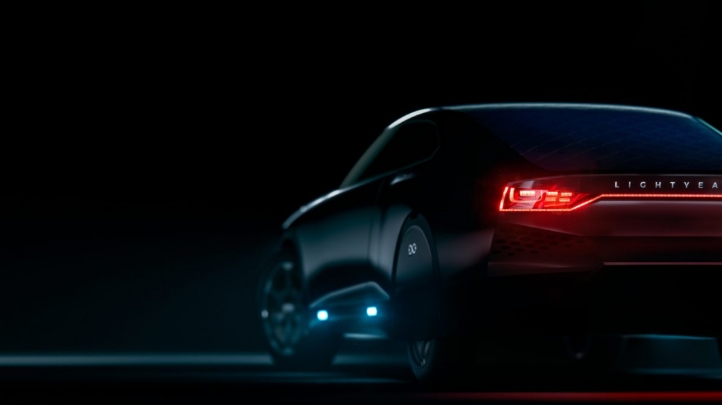Dutch electric vehicle (EV) startup Lightyear has confirmed that it will unveil a prototype of the world’s first long-range solar-powered passenger car next month, claiming that the vehicle will have a range of up to 800km (497 miles).

The initial designs for the car were unveiled last September. Image: Lightyear
The car, called the Lightyear One, is fitted with a solar roof and a battery system which enables 600-800km of range, depending on the speed at which the vehicle travels and the terrain which it travels along.
Lightyear, which is based in Helmond, claims that the car will be the world’s first solar model with long-range capabilities.
It has also stated that the four-wheel -drive model is capable of charging two to three times faster than existing EVs. According to the company, its battery system can receive up to 400km (248 miles) of charge by being plugged into a standard socket for eight hours.
The EV is additionally capable of topping up its own battery by self-charging using its rooftop solar array, with Lightyear claiming that the motorists will be able to travel up to 20,000km (12,420 miles) annually on solar power alone whilst using the model.
Around 100 people have already reserved a Lightyear One ahead of its unveiling, which will take place at a summit in Katwijk, the Netherlands, on 25 June. The first of the EVs are due to be delivered to customers in 2020.
“The Lightyear One was designed from the ground up to solve two of the biggest drawbacks of electric cars: range and charging,” Lightyear’s chief executive Lex Hoefsloot said.
“Within the next ten years, Lightyear’s goal is to deliver cars with very low operating costs and long lifetimes, so the usage cost per km [travelled] becomes extremely low. At that point, driving electric will become accessible to a much larger group of people than currently.”
Raise the (renewable) roof
Bloomberg New Energy Finance (Bloomberg NEF) has predicted that EVs will account for more than half of new car sales by 2040, with its most recent analysis finding that “the EV revolution is going to hit the car market even harder and faster” than it anticipated in 2017.
As this EV revolution continues to gather pace, Lightyear is one of several automakers to have begun exploring cars with solar roofs in a bid to help motorists overcome “range anxiety” and concerns about charging costs.
In 2014, the Sunswift team of undergraduates from the University of New South Wales broke the world record with their eVe car for the fastest EV over a distance of 500 kilometres on a single battery charge. The team then re-designed the sports car, originally designed exclusively for use during competitive sporting events, to make it street legal in 2015.
In the UK, the drive for a commercially-available solar car is being led by a partnership between Aston Martin and solar giant Hanergy. The two companies began in motor racing by affixing thin-film solar panels affixed to an Aston Martin GTE racing-car roof, before moving to develop models for general passenger use.
Audi is also working on solar roofs for EVs with Hanergy, through its subsidiary Alta Devices. It released its first prototype for a vehicle with a solar roof- aimed at extending its range, last year.
Sarah George
